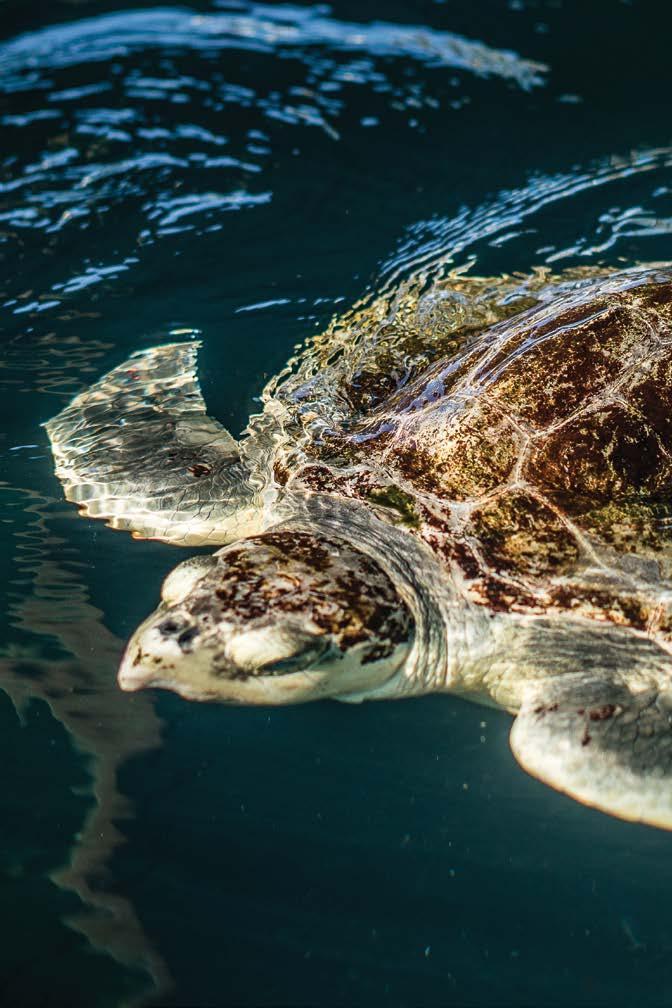
3 minute read
Meet the Turtles of the Amos Rehabilitation Keep
The Amos Rehabilitation Keep, also known as the ARK, is a wildlife rehabilitation center in Port Aransas that takes in marine birds, raptors, and sea turtles. The center is a University of Texas Marine Science Institute (UTMSI) program which sees around 1,500 patients a year, and handles more stranded sea turtles than any other facility in the United States! Not all ARK patients are able to be re-released though, and those special creatures become permanent residents of the ARK’s topnotch facilities. You can learn more about those special residents—Barnacle Billie, Nosey, George, Star, and Kiwi—below!
Keep an eye out on the ARK’s Facebook page to see when the next sea turtle release is happening!
Meet Barnacle Billie
Barnacle Billie is a loggerhead sea turtle who was rescued by the ARK in July of 1997 at Avenue G on Mustang Island Beach in Port Aransas. Unfortunately, Billie was found with both front flippers missing. These injuries would prevent her from being released as it would be hard for her to evade predators and find food.
Barnacle Billie was originally named Barnacle Bill and thought to be a male. When Billie was found, she was a juvenile weighing only 85 pounds. She has since grown to an adult weighing in at 190 pounds. Once sea turtles reach maturity, the tails of male turtles are much larger than the females. Billie has a short tail, which revealed her to in fact be a female!
Meet Nosey
Nosey is a Kemp’s ridley sea turtle who was rescued by the ARK in July of 2013. She was found at the end of Rockport Beach Park with no obvious wounds, but she was disoriented. She was pale in coloration, weirdly shaped, and she swam in an odd way. The ARK tried releasing Nosey three times, each time unsuccessful. With these issues, Nosey has been deemed unable to survive in the wild and is an ambassador for her species.
Kemp’s ridleys are the smallest and the lightest of all the species of sea turtles. Being light allows them to nest very quickly, keeping them safe from predators and safe from the elements, as they are the only species that nest in the daytime. They can usually nest within 45 minutes, while larger species take several hours to nest.
Meet George
George is a green sea turtle who was rescued by the ARK in November of 2014 near the Station Street Pier in the ship channel. George was found floating at the surface of the water, cold stunned with a large boat strike wound on the back of his shell. Due to these injuries, he developed deformations in his shell which caused air pockets to form so he permanently floats to the surface.
George’s buoyance issues are called Positive Buoyancy Syndrome, or “Bubble Butt Syndrome.”
Meet Star
Star is a green sea turtle who was rescued by the ARK in December of 2015 on North Padre Island near the seawall. She was found weak and lethargic, covered in marine leeches and with a large boat strike wound on the back of her shell. She later developed Positive Buoyance Syndrome just like George and Kiwi, preventing her from being released.
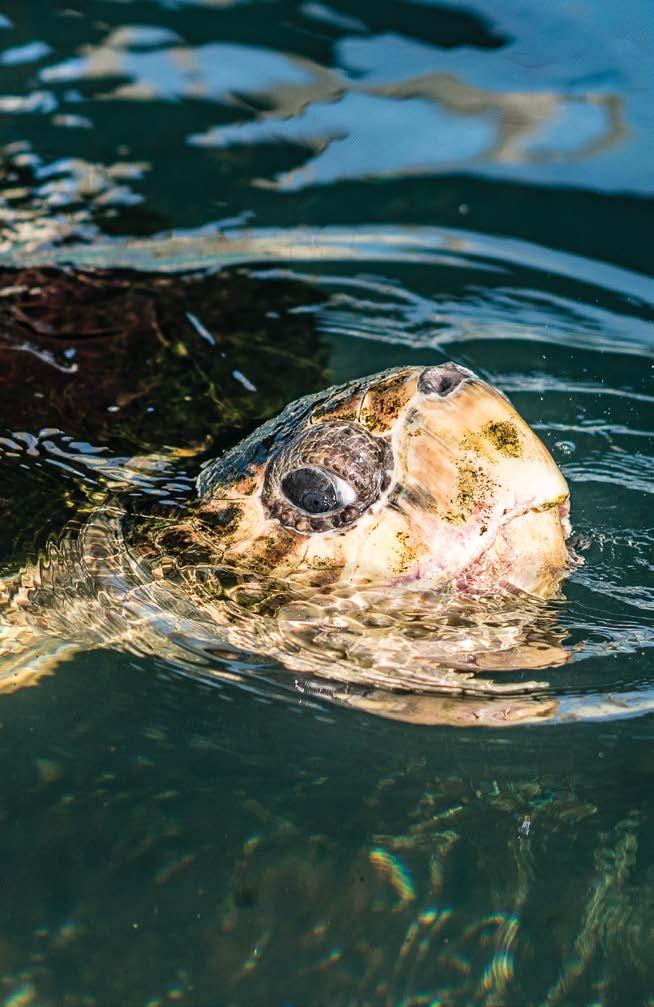
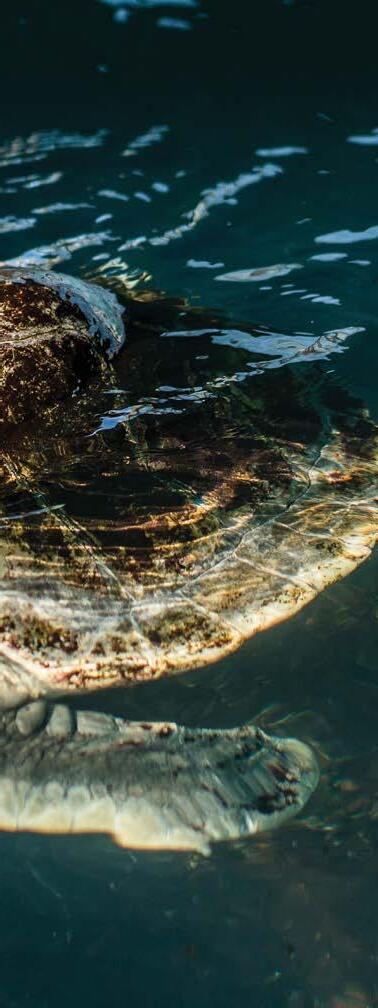
Green sea turtles are herbivores and are named after the color of their fat. They are commonly found in the Port Aransas area due to the abundance of algae on the jetty rocks and the beautiful sea grass meadows in the bays.
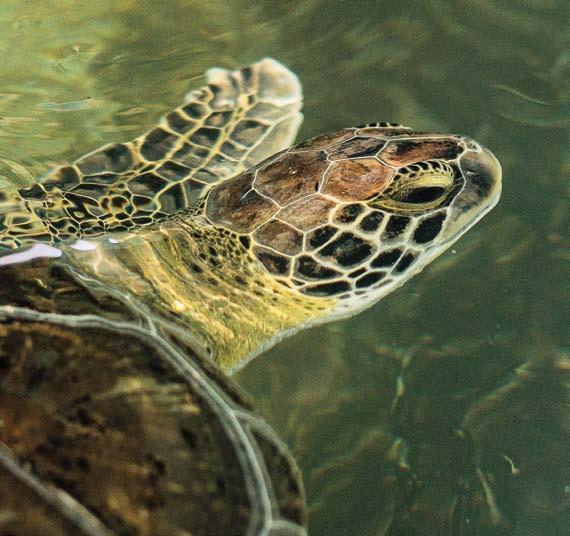
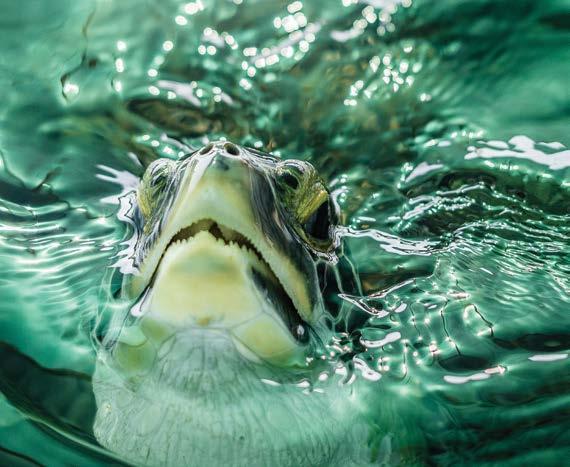
Meet Kiwi
Kiwi is a green sea turtle who was rescued by the ARK in January of 2018 near the UTMSI Boat Basin. Kiwi was found floating at the surface of the water, cold stunned with a large boat strike wound on the back of her shell. Boat strikes are very common for coldstunned turtles because they float to the surface, lethargic, and cannot swim away from oncoming boat traffic.
Kiwi is a past patient at the ARK. She was first rescued in 2015 after sustaining a different boat strike. Luckily, she healed from these wounds, was able to dive, and was released with a Passive Integrated Transponder (PIT) Tag. PIT tags are small tags the size of a grain of rice that are injected into the turtle’s flipper and will stay with them the course of their lifetime. Reoccurrence data provides important information for long-term monitoring of growth and movements of sea turtles.









